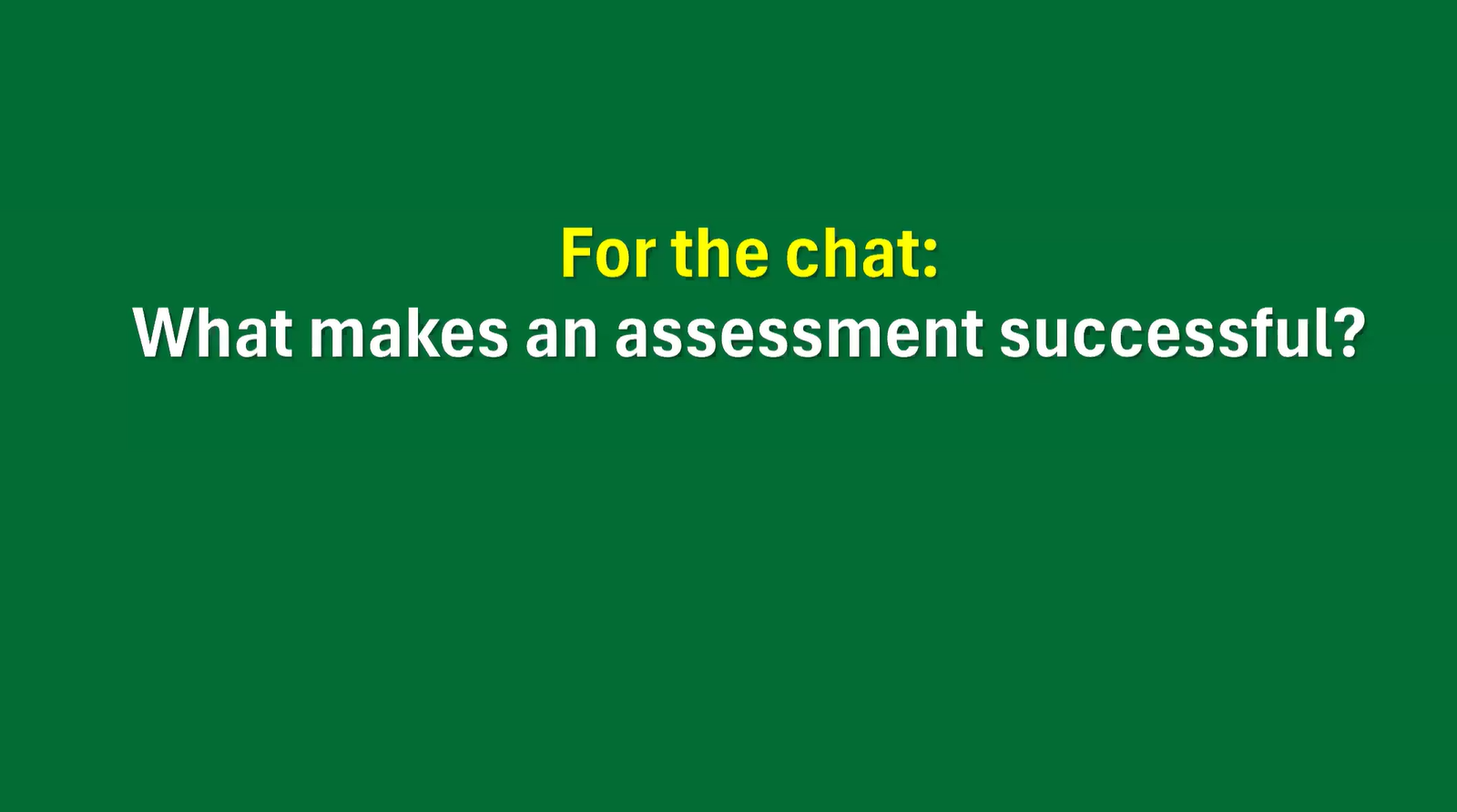- DSI CLEAR
- Teaching Resources
- Theory & Practice
- Methods for Continuous Improvement
- Using AI in the Higher Education Classroom
- Invisible Labor and Faculty Retention Since COVID-19
- Inclusive Discussions
- Inclusive Assessment
- Designing Assessments for Academic Integrity
- Inclusive Instructional Strategies
- Instructor Presence in the Online Classroom
- Tips for Providing Personalized Feedback to Students
- Course Design for Student Retention
- UNT's CLAW 3 Active Learning Classroom Instructional Guide
- UNT Faculty Teaching & Learning Resource Guide
- Growth Mindset in the Higher Education Classroom
- Course Outcomes & Objectives
- Multimedia Course Design for Student Engagement and Retention
- Level Up Learning With Portfolios
- Group Work in Higher Education: Benefits & Practices for Success
- Open Educational Resources & Copyright Essentials for Instructors
- Evaluating OER Resources
- Accessibility Online
- Copyright Guide
- Online Teaching
- UNT Syllabus Template
- Teaching Consultation Request
- Open Educational Resources & Copyright Essentials for Instructors
- Evaluating OER Resources
Inclusive Assessment

Assessments are an important part of any course because they measure student understanding. There are different types of classroom assessments. Formative assessments are frequent informal opportunities to demonstrate understanding whereas summative assessments are higher-stakes and less-frequent evaluative measures of student learning. Assessment can also be part of the learning process where learners co-design the assessment with the instructor (Earl, 2012).
Although traditional assessments like examinations are utilized in institutions of higher education across the United States, research suggests that diversification of assessment results in student engagement and empowerment (O’Neill et al., 2021). Additionally, traditional assessments often do not meet the needs of neurodivergent students (Tai et al., 2022). Systemic inequalities and inequities affect student learning (Denaro et al., 2022). Offering various methods and modalities of assessment or adjusting them to the student populations that we teach results in a more inclusive classroom and engaged, higher-achieving students.
Alternative assessments such as authentic assessment are linked to positive attitudes and behaviors and an increase in engagement and intended learning outcomes (James & Casidy, 2018; Jopp, 2020; Way et al., 2021). While authentic assessment doesn’t necessarily ensure academic integrity or higher grades, students choose authentic assessment over traditional (Colthorpe, et al., 2021; Ellis et al., 2019; James & Casidy, 2018; 2021; Saher et al., 2022; Tai et al., 2022). Authentic assessment also works well in online learning environments. Technology-enhanced authentic assessment has been found to positively impact student engagement, interactivity, creativity, and attainment of intended learning outcomes (Jopp, 2020).
As in all parts of a course, assessment can privilege ways of knowing that are prevalent in the dominant culture. In a study at a UK university, race-related inequities were amplified by assessment (Campbell, 2022). White students were better able to connect assessment material to their own lives, and Black students felt that they had to perform Whiteness verbally, symbolically, and bodily during assessments (Campbell, 2022). Lack of transparency in assessment grading criteria also impacted students from different raced backgrounds (Campbell, 2022).
Designing inclusive assessments is necessary to create fully inclusive learning environments (Nieminen, 2019). This can range from involving students in the process of assessment to altering the assessment to better serve the student population. Studies have illustrated that making assessments more inclusive can increase student motivation, engagement, and overall success in the classroom (Addy et al., 2021; Campbell, 2022; Tai et al, 2022). Highlights from the recent literature on inclusive assessment are listed below.
Inclusive Assessment Practices
-
Ensure accessibility with the use of alt text, structured headings, consistent test items, etc. (Burgstahler, 2020; Parr, 1996; Tai et al., 2022). More at DSI CLEAR Accessibility.
-
Give more low-stakes formative & fewer high-stakes summative assessments (Addy et al., 2021; Playfoot et al.).
-
Involve students in question and criteria design (Addy, 2021; Deeley & Bovil, 2017; Doyle, 2019; Nieminen, 2022).
-
Provide sample test questions, examples, and study guides (Burgshtahler, 2020).
-
Factor in students’ varied interests and backgrounds to increase engagement in class (Addy et al., 2021; Strauss, 2017).
-
Design multimodal (visual, auditory, reading/writing, kinesthetic) assessments for choice in how students demonstrate learning (Burgstahler, 2020; Morris et al., 2019; Nieminen, 2022).
-
When using traditional assignments, opt for a hybrid format (multiple choice combined with free response), as it more effectively identifies student understanding (Hubbard et al., 2017).
-
Prepare students for exams by modeling and providing hands-on examples (Campbell, 2022).
-
Grade anonymously to discourage implicit bias (Addy, 2021).
-
Offer immediate feedback and multiple attempts (Addy et al. et al., 2021).
-
Give oral feedback (Campbell, 2022).
-
Embed empathy into feedback to humanize online assessment (Payne et al., 2022).
Inclusive assessment is an integral component of the inclusive higher education classroom. For additional support on this and other teaching and learning-related topics, please visit the DSI CLEAR Events Page for upcoming events and Stream channel for past recorded events.
References
Addy, T. M., Dube, D., Mitchell, K. A., & SoRelle, M. (2021). What inclusive instructors do: Principles and practices for excellence in college teaching. Stylus Publishing, LLC.
Bruff, D. (2019). Intentional tech: Principles to guide the use of educational technology in college teaching. West Virginia University Press.
Campbell, P. I. (2022). ‘Pray (ing) the person marking your work isn't racist’: racialised inequities in HE assessment practice. Teaching in Higher Education, 1-15.
Christie, H., & Morris, N. (2021). Using assessed blogs to enhance student engagement. Teaching in Higher Education, 26(4), 573-585.
Denaro, K., Dennin, K., Dennin, M., & Sato, B. (2022). Identifying systemic inequity in higher education and opportunities for improvement. PloS one, 17(4), e0264059.
Doyle, E., Buckley, P., & Whelan, J. (2018). Assessment co-creation: an exploratory analysis of opportunities and challenges based on student and instructor perspectives. Teaching in Higher Education.
Faulconer, E., Griffith, J. C., & Frank, H. (2021). If at first you do not succeed: student behavior when provided feedforward with multiple trials for online summative assessments. Teaching in Higher Education, 26(4), 586-601.
Jopp, R. (2020). A case study of a technology enhanced learning initiative that supports authentic assessment. Teaching in Higher Education, 25(8), 942-958.
Morris, C., Milton, E., & Goldstone, R. (2019). Case study: suggesting choice: inclusive assessment processes. Higher Education Pedagogies, 4(1), 435-447.
O’Neill, G., & Padden, L. (2022). Diversifying assessment methods: Barriers, benefits and enablers. Innovations in Education and Teaching International, 59(4), 398-409.
Payne, A. L., Ajjawi, R., & Holloway, J. (2022). Humanising feedback encounters: a qualitative study of relational literacies for teachers engaging in technology-enhanced feedback. Assessment & Evaluation in Higher Education, 1-12.
Playfoot, D., Wilkinson, L. L., & Mead, J. (2022). Is continuous assessment inclusive? An analysis of factors influencing student grades. Assessment & Evaluation in Higher Education, 1-13.
Strauss, P., & Mooney, S. (2017). Assessment for Learning: capturing the interest of diverse students on an academic writing module in postgraduate vocational education. Teaching in Higher Education, 22(3), 288-303.
Tai, J., Mahoney, P., Ajjawi, R., Bearman, M., Dargusch, J., Dracup, M., & Harris, L. (2022). How are examinations inclusive for students with disabilities in higher education? A sociomaterial analysis. Assessment & Evaluation in Higher Education, 1-13.

